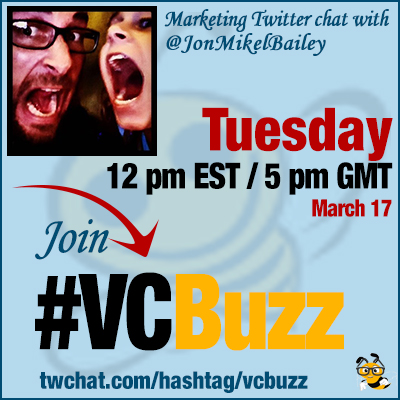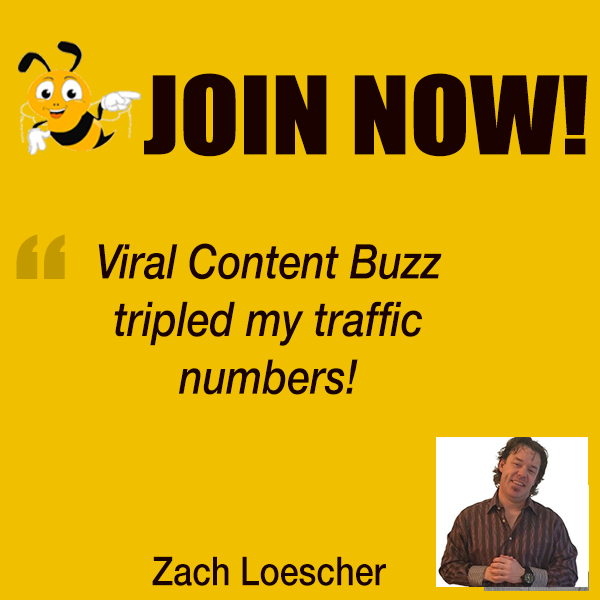
Is your website serving its purpose? Actually, do you even know that purpose?
How clearly is every page of your website set up? Is it easy to understand what you want your users to do once they land there?
Those are all important questions with no easy answers. Whether you want to build income, build brand awareness or build your email list, your on-page CTAs (calls-to-action) should clearly communicate that.
***Add #VCBuzz chats to your calendar here.
***Please sign in here to follow the chat -> twchat.com/hashtag/vcbuzz
About @JonMikelBailey
.@JonMikelBailey is no stranger to #VCBuzz Twitter chats. He already hosted one to teach us on how to develop an effective and realistic scope of work for a website redesign.
Jon-Mikel Bailey is the Chief Development and Marketing Officer for Wellspring Digital, a full-service digital marketing firm specializing in SEO, PPC, Marketing Automation, and Content Marketing.
He has been published in MarketingProfs, SpinSucks, {Grow}, Social Media Today, and more. He has spoken at the Digital Summit Series, MarketingProfs, ITE, Grant Thornton, and others.
Questions we discussed
Q1 What makes a good call-to-action?
A call to action must be simple, obvious, and ask for the action. Obvious beats cute in terms of conversion rates.
A good CTA (call to action) has an emotional appeal. Crazy Egg suggests using the PAS Model, Problem/Agitate/Solve.
Good CTAs use attention-getting colors, language, and graphics. But, don’t go overboard. It’s still important that your CTAs are on-brand and don’t clash with your site look and feel.
@JonMikelBailey It’s almost like you’re “ordering” your audience to do something. Nicely, LOL. #vcbuzz
— Lisa Shomo (@keenkoncept) March 17, 2020
A good CTA is based on a solid marketing plan with buyer personas, customer journeys, and trackable metrics.
I find the biggest mistake clients make is not setting up the call to action well. Very little thought about the ad or page that send them to the CTA. #vcbuzz
— Don Sturgill (@DonSturgill) March 17, 2020
Q2 How to analyze and test your CTAs to improve your on-page conversions?
Create A/B testing pages. Exact same landing page, different CTA button. It will lead to the same outcome but will have different ask text and different colors.
Use heat mapping tools like Hotjar or Crazy Egg to see how people engage with your page. This will help you to determine where to place the CTA.
Place the same CTA at the top and the bottom of the page. This will help to determine which is more engaging.
A2 Create multiple landing pages and test one thing at a time to improve conversions: test title, image, CTA, text all separately. #vcbuzz https://t.co/c53GJh3IhO
— Gail Gardner (@GrowMap) March 17, 2020
Make sure you’re tracking the right metrics. Your goals should be aligned with the singular purpose of the call to action. You can’t improve a CTA that hasn’t been thought through completely.
Q3 What if there are a few CTAs on one page? How to prioritize and set them up the way the user flow remains clear and effective?
Easiest answer, don’t. But I know that’s unavoidable sometimes.
The average webpage will have multiple CTAs: contact links, targeted CTAs, and your general sidebar, header, and other callouts. Use layout, color, and other design elements to make the more important CTAs standout.
Give each CTA space to stand out. This needs to happen across all devices. Pay special attention to where CTAs appear on mobile.
Ask yourself the tough question… “Do we need all of these CTAs on this page?” Eliminate any that could potentially draw attention from the more important CTAs.
Test different versions of your page with varying CTA placement. Use A|B testing as mentioned earlier. Test one CTA at a time.
+A3 Create a quick 5-second test to identify which CTA grabs attention first. It is free! #vcbuzz
— Ann Smarty (@seosmarty) March 17, 2020
Q4 What are some conversion optimization mistakes you see over and over again?
MISTAKE – Using dull language. Sometimes you’ll want to change the design of a poor performing CTA when all you really need to change is the wording. Use action words. And ask questions.
MISTAKE – Starting with unrealistic goals. If you’re optimizing for a goal you cannot achieve, you will waste time chasing your tail.
Website performance can affect your conversion rate. A marketer might think their CTA is bad when, in fact, it’s the slow load time that is killing their conversion rate. UX matters.
And the classic, using a form with way too many fields. Reduce the form fields to the absolute minimum.
MISTAKE – Disregarding mobile. Many times, the bulk of your audience will be on mobile devices. Go with a mobile-first approach.
MISTAKE – Making drastic changes. These changes are more like starting over. Make smaller changes and track conversion.
a4 Conversion optimization issues:
— Debi Norton (@BRAVOMedia1) March 17, 2020
* Too much text
* Busy Page
* Unclear offer
* Asking the VISITOR to “think too hard”#VCBuzz
Q5 What are your favorite conversion optimization tools?
Hotjar & Crazy Egg. Heatmapping tools to visually see the context of how people engage with your webpages.
Unbounce. Landing page builder specifically built for CRO (conversion rate optimization).
? @Unbounce is AWESOME. Love the versatility and ease of use. Great Landing Page Builder.#VCBuzz
— Debi Norton (@BRAVOMedia1) March 17, 2020
Optimizely. A tool that integrates with your webpages for A/B testing.
Good Old Google Analytics. A simple tool to view engagement with UTM code URLs. You can also use this to track CTAs on social channels.
A5 Two more tools to monitor your conversion channel: @GetOribi and Finteza #vcbuzz
— Ann Smarty (@seosmarty) March 17, 2020
Our previous conversion optimization chats:
- Creative Lead Generation and Conversion Optimization Tactics w/ @DeanLynn
- Lead Generation Tips and Tricks with Mike McDonald @MikeSMcDonald
- Using Subconscious Marketing Techniques to Up Your Conversions with Neal Cole @northresearch
- How to Write to Convert with Pam Neely @PamellaNeely #VCBuzz
How to Up Your Conversions with @ZacJohnson - Analytics to Improve Conversion: Twitter Chat with Amel Mehenaoui @amelm #VCBuzz



